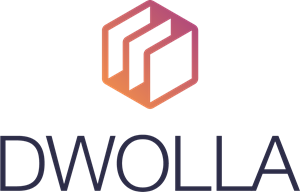Just what does the “new normal” look like in a post-pandemic payments world? We reached out to Brady Harris, CEO of programmable payments company Dwolla for his insight into what’s ahead for business and the payments industry.

The impact of coronavirus on business and consumers is dramatic although it varies widely from devastating to encouraging according to Harris. He provided Payments NEXT with several examples of the impact on business.
“One of our customers facilitates gratuity payouts for hairstylists. Since hair salons have been shut down, this customer, who was growing at an astronomical rate, has seen their business decimated and their transaction volume has dropped to zero. This is a massive decline for a business that was once growing at a breakneck pace,” Harris said.
On the flip side, another client of Dwolla, a healthcare marketplace that provides healthcare staffing (doctors and nurses) is seeing record-breaking growth. With the demand for telemedicine growing, this business helps connect more doctors with patients who need non-emergency telemedicine services.
Not only has the pattern for payments shifted, but consumers and businesses also have new expectations and seem more willing to test new payment methods and digital solutions.
Meet the “new normal”
While 2020 started strongly with 7.1% growth in US digital transaction volume, Harris said payments clearing house NACHA reported a slowdown in payments volume for the second half of March mostly because of the pandemic. “That includes ACH, where the slowdown in economic activity has affected the volume of payroll payments, bill payments, and supply chain payments.” He expects the trend to continue through the second quarter.

“Like most companies, Dwolla has been impacted in the sense that the health and growth of our business is linked to the success of those companies we serve across various industries. When our clients are seeing reduced payment volume or sales, then that flows through to our platform, impacting our growth and revenue,” Harris said.
“We’ve worked very hard with our clients to find creative solutions to help them survive in the midst of this health and financial crisis, in many cases, ways that are not to Dwolla’s benefit,” Harris explained. “However, we believe that if our clients are successful and can “live to fight another day,” then that will ultimately benefit us in the long run.”
It all adds up to a profound shift in how businesses will operate and survive in the “new normal.”
What’s on the payments horizon?
With our experience of payments in the new pandemic world, what do things look like just over the horizon?

According to the Norwegian financial newsletter AksjeBloggen, the global digital payments market is expected to grow by 45%, reaching $6.7 trillion in value by 2023.
That also means the future payments landscape will shift towards contactless payments, digital wallets, mobile POS, faster payments, and yet-to-be-created financial products and tools.
E-commerce – 80% are digital payments; mobile emerging
Statista research shows global e-commerce will surpass $4.7 trillion by the end of this year with digital payments making up 80% of online transactions. By 2023, 6.1 billion people will use digital payments, up from 5.2 billion this year around the world.

Watch out for the rapid growth of mobile POS payments, expected to grow from $1 trillion in 2020, and reaching $2.1 trillion in value by 2023, reflecting an annual growth rate of 12%.
And that’s just a start. The number of mobile POS transactions is expected to grow from 824 million in 2017 to 1.6 billion mobile POS transactions by 2023. In China, digital payments are expected to reach $1.9 trillion by the end of this year compared to the US, next largest with nearly $1 trillion in transactions this year.
Next wave is instant payments
Today, a large number of payments around the world still ride the Visa and Mastercard rails with merchants paying hefty transaction fees and waiting for up to 48 hours or more for payments and deposits to clear.

In the US, NACHA which operates the automated clearing house (ACH) network for financial institutions, cleared more than 250 million same-day transactions in 2019 with a value of more than $247 billion. Same-day payment features are also improving.
On March 20, NACHA announced a Same Day ACH transaction limit increase from $25,000 to $100,000, setting the table for faster, larger payments for business and consumers for everything from payroll and other consumer direct deposits, bill payments, business-to-business payments, and person-to-person payments – to be initiated, settled, posted, and funds made available within a single day.
NACHA also lengthened the time of day for same-day transaction posting and completion from 2:45 PM to 4:45 PM (ET) effective March 19, 2021.
In a recent interview with the Tearsheet podcast, Harris talked about the potential for instant payments using the same-day ACH rails and Dwolla’s API and technology. “The exciting thing about ACH rails is that there’s some emerging technology where you can have same-day — and even instant — fund transfers. It’s also a fraction of the cost of interchange of what Visa and Mastercard charge on the same transactions. So, you have a couple of things intersecting. You have really fast deposit times. Using API, you have a highly customized programmable payment that can be integrated into software, apps, platforms, and dashboards. And it’s a fraction of the cost,” he said.

Businesses are clamoring for lower transaction fees, greater security, and faster payments and that’s likely to bring change and new products more quickly, according to Harris.
“We are building a solution that addresses the need to access funds on a debit card right now. A unique component of this solution is that it has a flat fee and is not percentage-based. For those that need funds right now, they need all of their funds and even a 1% payout ends up being a big cut,” he said.
Mobile moving faster
Businesses and consumers are now used to immediate information and instant gratification. “We want things now. The idea that you have to wait a couple of days for money to show up in your account is going to be seen as increasingly antiquated,” Harris said.

“So, you’ve got push to debit, push to card, fintech disrupters like Venmo that are finding creative ways to send funds faster — I think everyone is just raising the bar in terms of what you need to do to compete in B2B, B2C, and P2P,” he recently explained.
“Both consumers and businesses increasingly expect their payments’ to fit organically within their consumer and buying habits, For example, payment functionality that fits seamlessly within apps or their mobile phones,” Harris said.
In addition to the demand for faster fund transfers, is also a need for more robust reporting functionality. “As a general consumer trend and a demand from those creating technologies, Dwolla’s product roadmap is built in a way that we are and will continue to support our clients and end-users that help them meet these demands.”
The fast-changing landscape and the needs of business all create a perfect storm for a new wave of instant payment capabilities and services that are coming soon by Dwolla and other innovators in the industry as we move forward into the “new normal” world of business.
You can learn more about ACH payments and best practices in Dwolla’s Resource Library.








LET’S CONNECT